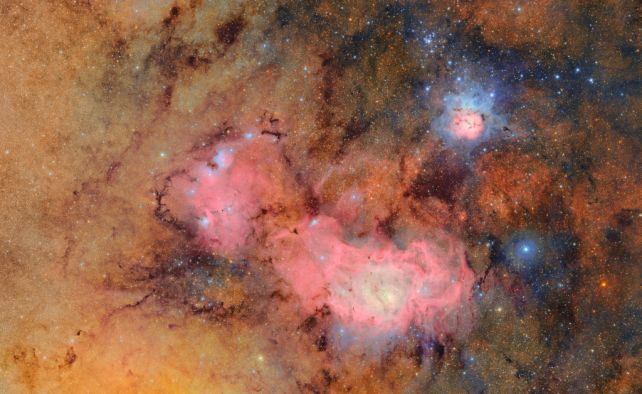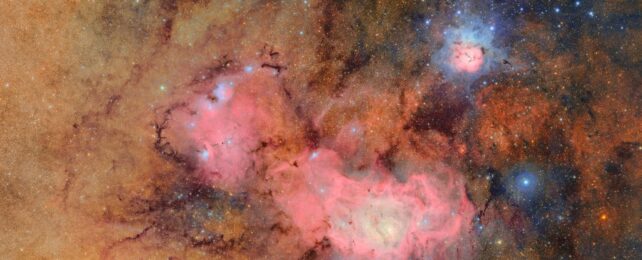The first major unveiling of images from the Vera C. Rubin Observatory is just about to drop, and we have a little taste of the wonders to come.
Teaser images released ahead of the main event give us our first glimpses of what the powerful observatory has managed to capture in just 10 hours of observations – millions of galaxies and a plethora of asteroids, datasets that are just the first foray into a new era of astronomy.

The observatory telescope is embarking on a 10-year survey of the southern sky called the Legacy Survey of Space and Time (LSST) in near-ultraviolet, optical, and near-infrared wavelengths, capturing the entire sky every few days to effectively compile a huge timelapse of the Universe.
Related: A Game-Changing Telescope Is About to Drop First Pics. Here's How to Watch.
Each section of the sky will be recorded around 800 times using the telescope's 3,200-megapixel camera – the largest camera ever built.

The first image shows the Trifid and Lagoon nebulas in the Milky Way galaxy, two clouds in which baby stars are being born, a few thousand light-years from the Solar System. Such nebulas are not only incredibly pretty, they're important repositories of information about how stars form and grow. Rubin's image is a composite of 678 individual observations, taken over the course of seven hours.
The rest of the images will drop on 23 June 2025, at 15:00 UTC (11:00 EDT), when the US National Science Foundation and Department of Energy will host a full reveal event. If you want to get in on the hype, live watch parties will be taking place all over the world, and the entire event will be livestreamed on YouTube – you can tune in below.

"NSF-DOE Rubin Observatory will capture more information about our Universe than all optical telescopes throughout history combined," says Brian Stone, acting director of the NSF. "Through this remarkable scientific facility, we will explore many cosmic mysteries, including the dark matter and dark energy that permeate the Universe."
